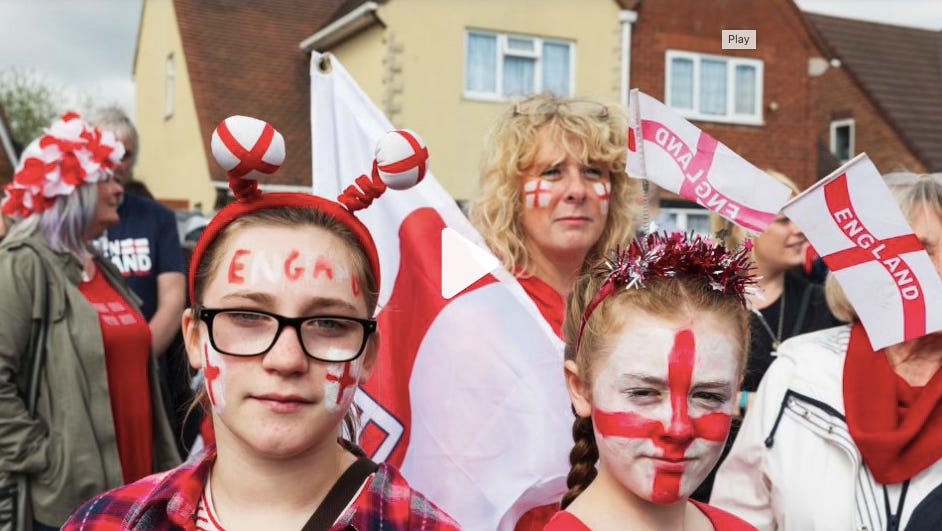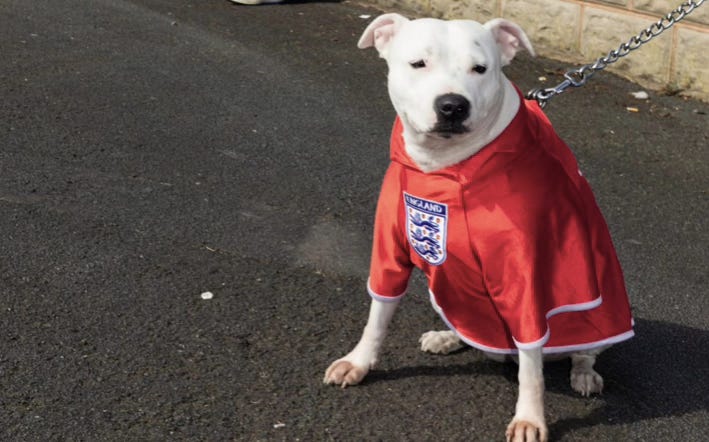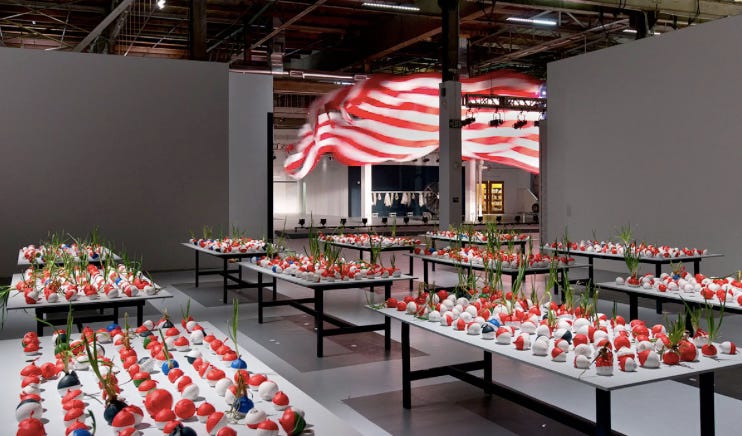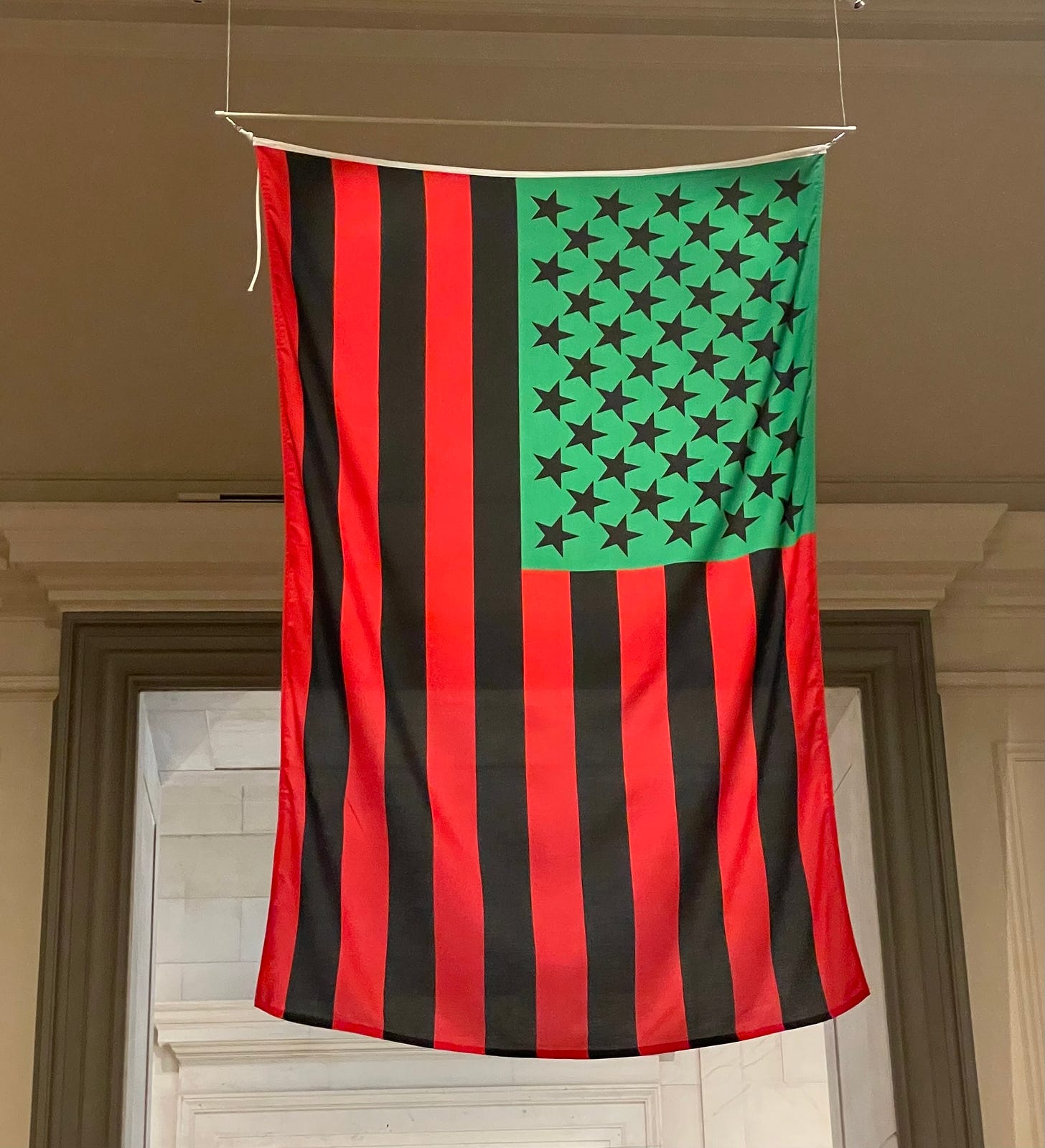The Gallery Companion is Back!
Plus flags, Taylor Swift, art censorship and more
Welcome if you’re a new subscriber, and hello again to my loyal long-time readers. The Gallery Companion is a newsletter for artists, art lovers and the curious-about-art-want-to-learn-more.
I’m Victoria Powell, the voice behind The Gallery Companion.
It has been a while since I last emailed you, so I want to update you on a few changes I’m making to the format of my emails from now on, and the stuff I’ll be writing about.
Every other Friday (or so) I’ll send you a newsletter choc-full of art-related things that I’m thinking about, links to inspiring videos about artists and their practice, news about interesting-looking international exhibitions, stories about art (contemporary and historical), and features on the artists who subscribe to The Gallery Companion.
Less long-form essay (like I used to write) and more smorgasbord of delicious art tit-bits. I’m based in the UK so some of my content will inevitably skew to exhibitions and news going on here, but you are an international readership so I’ll do my best to cover far and wide. Even better if you can send me news of exhibits from your neck of the woods that you think are worth sharing with other readers.
There will be lots in The Gallery Companion newsletter to inspire you, so it’s a read-it-over-several-goes type of email. I would love to know what you think — please comment and like. I use Substack to send out my emails, so the easiest way to share your thoughts with me and other readers is to click through to the app or website.
Flags, flags, flags.

It has been a red and white summer here in England. ‘Operation Raise the Colours’ has seen a spontaneous celebration of the English flag. The St George’s flag has been hoisted up on street lampposts, motorway gantries, and buildings; roundabouts, potholes and street crossings have been painted red and white; cars festooned; and people have hit the streets draped in flags.
Unlike in the USA, where it’s normal to celebrate and revere the American flag, and where you see the Stars and Stripes flying proudly everywhere, ‘Raise the Colours’ has sent Poor Old England into a bit of an existential crisis.
The media has been agonisingly hand-wringing about what it means to be English, patriotism, the politics of class, and the divisive symbolism of the St George’s flag. Celebrating all things English is not something we often do here (big sporting events excepted), so it has been an interesting debate to observe. Flying the English flag has been associated with racism, the far right, populism and the English working class, and has raised uncomfortable questions about the success of multiculturalism in our country.
My mind always goes to how artists respond to these events and questions. And there’s no better artist for this topic than the great British photographer of the working class, Martin Parr.
Parr, who is now in his 70s, has been quietly snapping expressions of Englishness for decades. His photographs capture the richness and quirkiness of our English culture with deadpan humour and honesty.
The image of the crowd above was taken at the annual St George’s Day parade in 2018 in West Bromwich, one of the most deprived areas of the UK, which overwhelmingly voted to leave the EU in the Brexit referendum in 2016.
What I love about this particular image is how Parr has hard-cropped so much into the shot. It’s a busy crowd, but there’s also a quiet focus on the girl in the left foreground. She has an almost defiant look despite her playful bug antennae, supported by the proud distant gaze of the blonde woman standing over her shoulder, who blends seamlessly into the sand-coloured house behind her. To the right, a face completely covered by the St George’s flag. This is patriotism rooted in place and family: an expression of identity that the West Brom residents keep on celebrating year after year.
Meanwhile over in the States Trump has created a brouhaha about burning the American flag (American readers, is this an out-of-control problem thing?). One year in jail for that crime he says, although one wonders how that will work with America’s firm freedom of expression rights. Trump’s latest directive aims to restore ‘respect, pride and sanctity’ to the US flag. But as many American artists over the years have explored through their work, you can’t control meaning. The flag as an object is complex and deeply symbolic.
This is a subject the artist Pope L. (1955-2023) addressed in his art practice. He was a multidisciplinary artist and although he isn’t a household name with audiences, his influence on other artists over the years has been profound.
Back in the late 70s he started to make a reputation with a performance called Crawl (1978). In this work he dressed himself in a suit bought from a charity shop and crawled the length of 42nd Street in New York on his hands and knees. Passers-by were forced to confront the incongruity of a man in business attire crawling along the busy sidewalk.
It was a genius performance piece, which drew attention to the homeless people that the average upright citizen walking along the street often tries to ignore. And it probed assumptions about race, poverty, and how we self-police our behaviour in public space. At the time several of Pope L.’s close family members were living on the streets. It was uncomfortable to watch, and it got right under people’s skin in the way that only the most powerful art can.
In 2015 Pope L. created a work about the American flag that raised questions about the rituals and interpretations of it in different contexts. He used the humble onion as a metaphor for the layers of symbolic meaning and performative, constantly-changing aspects of the flag as an object. He painted the onions in red, white, blue, black and green, arranging them in rows on tables, and as the exhibition continued the onions started to sprout, shrivel and rot. In the background, an oversized flag blowing wildly through the gallery, deteriorated as it became frayed and torn.
I have always loved the way Pope L. talked about his art practice. He was a poetic and soulful man. If you want to find out more about his work this interview is a great introduction to his career. Skip to the 16-21 mins mark for his chat about the American flag. I’d love to know your thoughts.
Art censorship is alive and kicking in 2025
Over in the USA Trump has taken aim at The Smithsonian, the world’s largest museum, education and research complex. The White House is concerned that museum programming should not ‘divide Americans based on race’. Trump himself has spoken publicly recently on the issues he believes the Smithsonian has, including that the curating is too focused on ‘how bad slavery was’.
Presumably this would include artworks such as the recently acquired iconic African American Flag, by conceptual artist David Hammons. Red, green and black were the colours of the Black Liberation Flag created in 1920 by Marcus Garvey, the leader of the Pan-Africanist movement. Red denotes the blood that was shed, black is for the people it represents, and green the abundant wealth of Africa. For the artwork Hammons replaced the colours in the Stars and Stripes, calling attention to African American pride in a nation where he believed Black people saw little validation of their worth and contributions to history, culture and society.
No matter what you think of the artwork (and I’m sure readers’ opinions will be divided on this piece), any government intervention into what the public should and shouldn’t see is a troubling development. It’s a battle for control of the narratives of history, and in my view it’s Orwellian. This week The New York Times Daily podcast explored the story — it’s an interesting listen.
But there’s also another problem going on with freedom of expression in the arts which I think is equally as troubling, and that’s the issue of self-censorship amongst artists themselves. In May this year a British report from Freedom in the Arts found 84% of artists don’t feel free to express their politics. Nearly 80% report harassment for stepping out of ideological line, and 78% agree with the statement ‘people working in the arts wouldn’t dare own up to right-of-centre political opinions’. The result is, as the journalist Jo Bartosch has argued, a crippling conformity:
Safe art is not only unsatisfying, it is a product of fear and a sign of decline.
I couldn’t agree more. No matter what your politics, only art that speaks the artist’s true ideas, thoughts and feelings is worth calling art.
I would love to know your thoughts on this topic so please post in the comments section on Substack.
Taylor Swift, American college football and manipulating audiences
And finally to Taylor Swift. The news that her latest release The Life of a Showgirl is imminent has filled this Swiftie with joy. I spent far too long the other day listening to Taylor in conversation with her fiancé Travis Kelce and his brother on their podcast New Heights. It’s not my usual listening stomping ground, but I was hooked in when Taylor started talking about the construction of her live shows, and the spell-binding spectacle that she intricately created on her Eras tour. She said this:
I wanted it to be references that I thought were really high concept and high value for fans, and for them to see things that they hadn’t necessarily seen before all in one concert. But I wanted to do it at the highest intensity, rapid fire, you’re seeing something new every 15-30 seconds, and so it feels like you’re scrolling in an algorithm. And when I heard reports of people saying that they got actual amnesia after the concerts, I was like, oh I think we did it.
It reminded me of the work of video artist Paul Pfeiffer, whose films recast the visual language of pop spectacle to investigate how media images shape our perception of the world. His films focus on mass audience events (live sports events, stadium concert tours, televised game shows), which he meticulously samples and re-edits to expose the manipulation of the crowd. In this video he talks the viewer through this process. It’s a fascinating — and revealing — watch:
And something that Pfeiffer said in this video struck me as perhaps one useful definition of art. What do you think?
I think of art as the finger that points. To me there’s a value of becoming more conscious of the manipulation. My agenda is to call attention to that process of mediation… to take something that’s the most familiar and to defamiliarise it becomes a process of breaking the spell. To produce almost like a kind of disturbance.
Three exhibitions I’d like to see
William Kentridge, Listen to the Echo at Museum Folkwang, Essen, Germany. 4 Sept 25—18 Jan 26. Retrospective of one of South Africa’s most important contemporary artists. Kentridge grew up during the apartheid era, and is best known for his charcoal drawings and animated films, but also works with tapestry, sculpture and prints, and in theatre and opera. I love his work.
Jenny Saville, The Anatomy of Painting at the National Portrait Gallery, London, UK. Until 7 Sept 25 so get in quick. British artist Jenny Saville paints the human body, describing her creative process as ‘laying down a problem’, destroying and rebuilding, until something that doesn’t at first make sense starts to make sense. Essential viewing.
Paul Klee + Ray Johnson: TYPOFACTURE at SFMoMA, San Francisco, USA. 23 Aug 25—April 26. Two of my faves in one show, exploring the influence of pioneering Bauhaus artist Paul Klee (1879-1940) on Ray Johnson (1927-1995), an American collage and correspondence artist. Klee’s merging of myth, symbol, figuration and expression shaped Johnson’s approach. Sounds excellent.
Calling all my artist readers!
Every week I will be featuring exhibition news from my artist subscribers around the world. If you’ve got an exhibition coming up, let me know! Hit reply, send me info about it, dates, venue, country, a link to find out more, and a striking image. Keep the info you send me short and sweet so I can quickly summarise. This is a growing community (4,000+ readers) so it’s a great way to get some eyes on your art!
That’s a wrap!
Thanks as always for reading, folks. I hope there were some good clicks here for you. And please share with people you think would love this newsletter. I would be very grateful if you would help spread the word.
Join The Gallery Companion’s chat
There’s also a chat area on the Substack app for subscribers, which you can access on the Substack website too. If you have an exhibition or a news story you want to share, a question for the community, an image that’s blown you away that you want to talk about, you can start a chat and share with The Gallery Companion community. I’ll be posting on there too. Click on the link below and follow the instructions.






I was so happy to see you in my inbox this morning! As an (ashamed and utterly appalled) American, I am horrified at the Trump administration’s attack on the Smithsonian (and public radio, science in general, and immigrants - the list could go on). I have never seen a flag burning here, but like with everything, I’m not surprised he’s making it seem like it is happening all the time everywhere. During the No Kings protest I attended, many people were proudly reclaiming the American flag in the name of the constitution and founding fathers, so I’m not even sure who would be burning them at this point.
I love that you will feature artists and this new format. Thank you for putting your thoughts into the world!
Darling what a delight to read your articles.
I am so proud and delighted that you are back again, as l do not think that any body matches your abilities to command with such clarity the subjects you bring to your readers.
Elizabeth